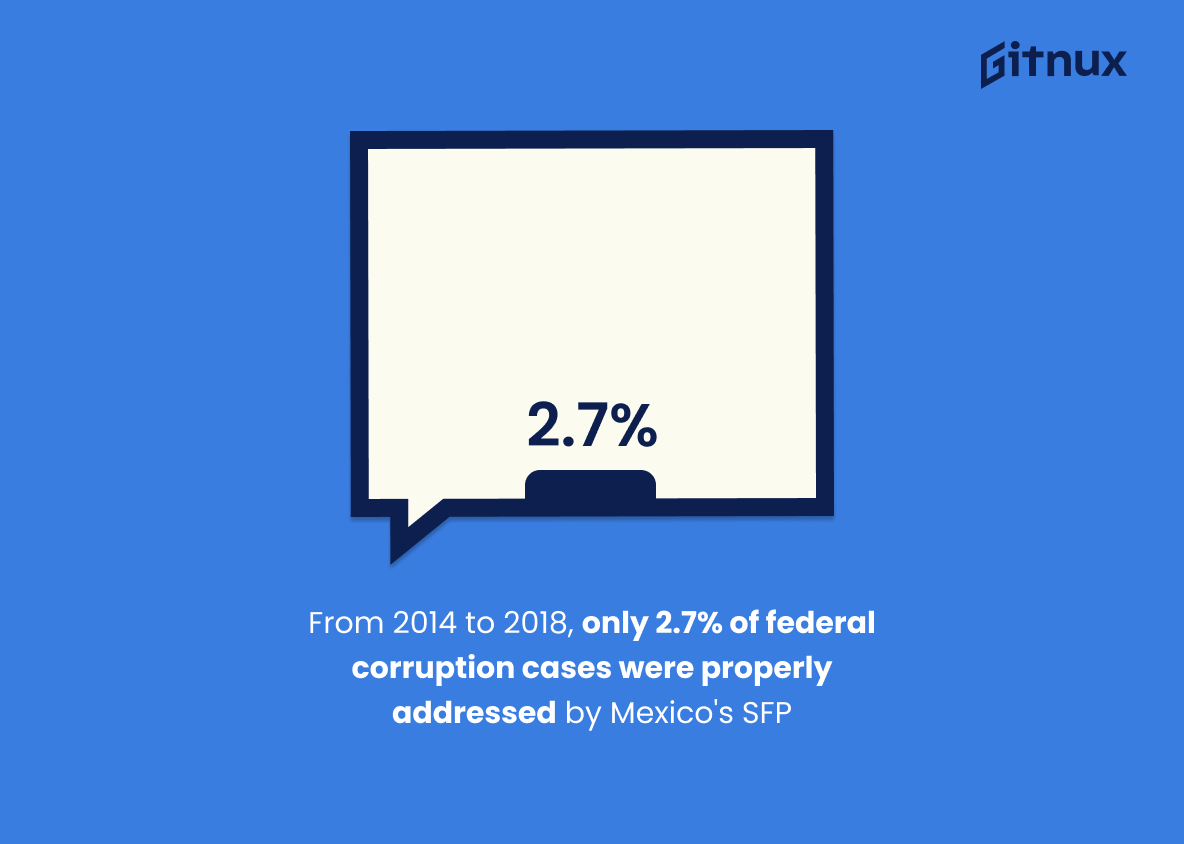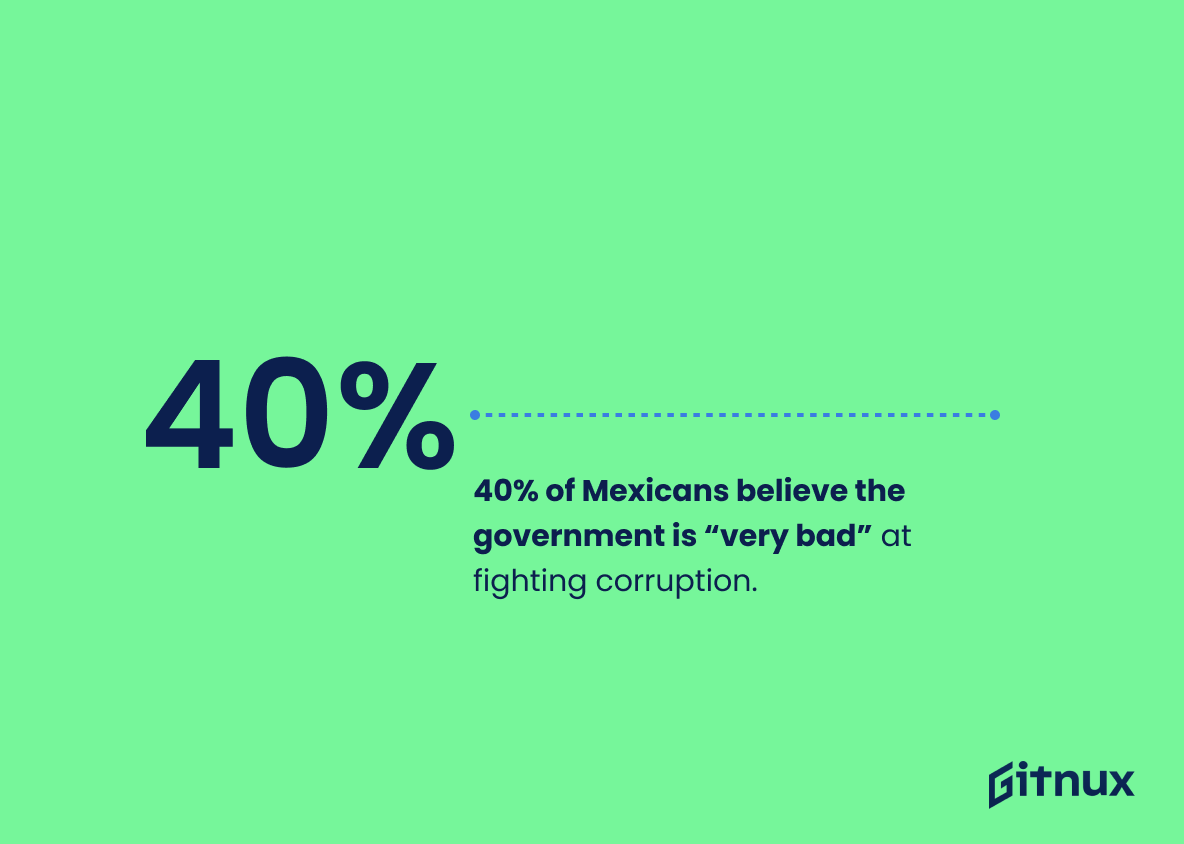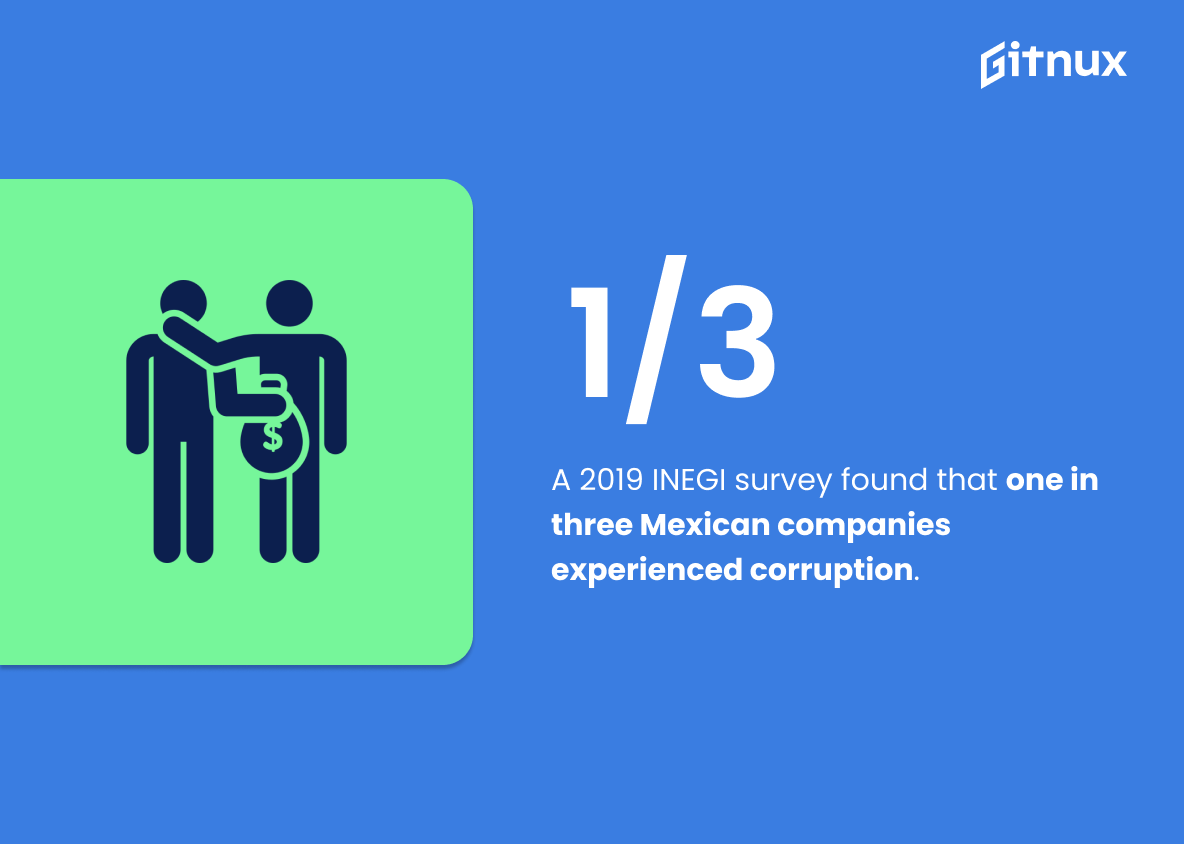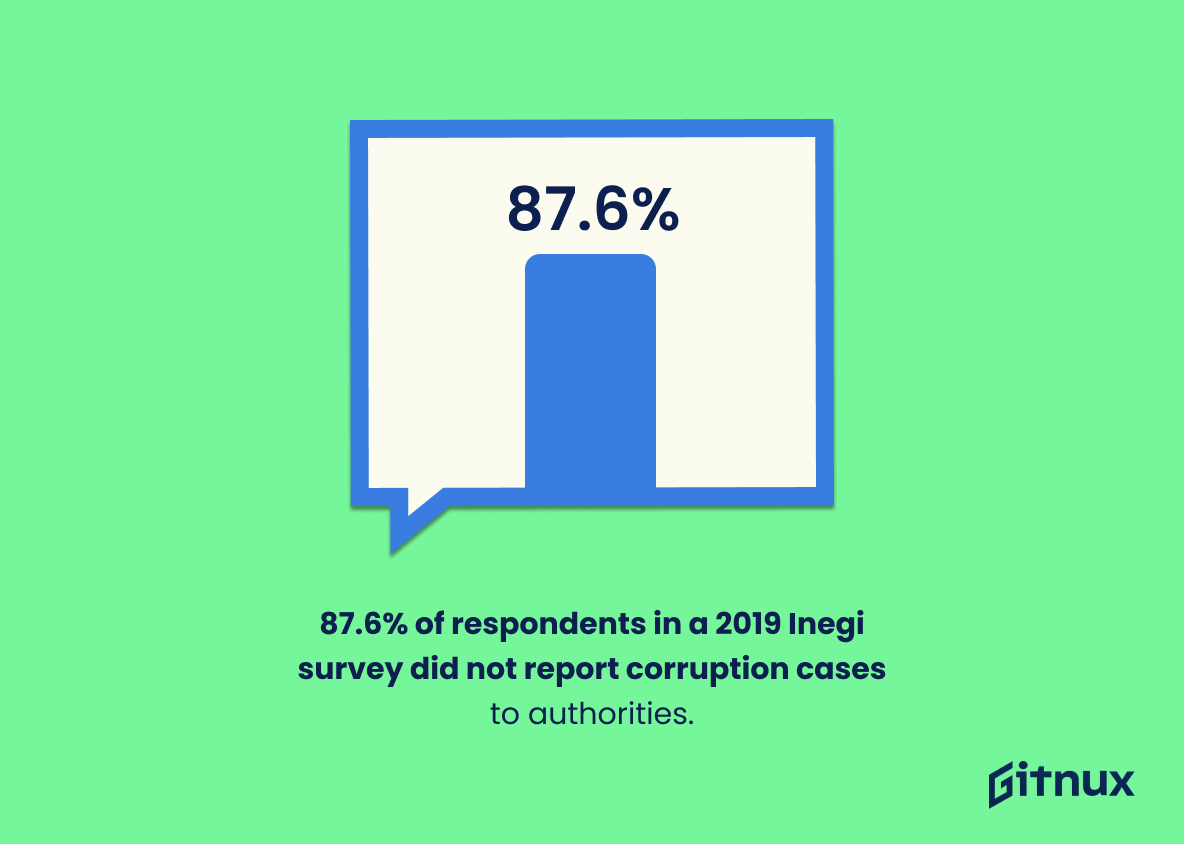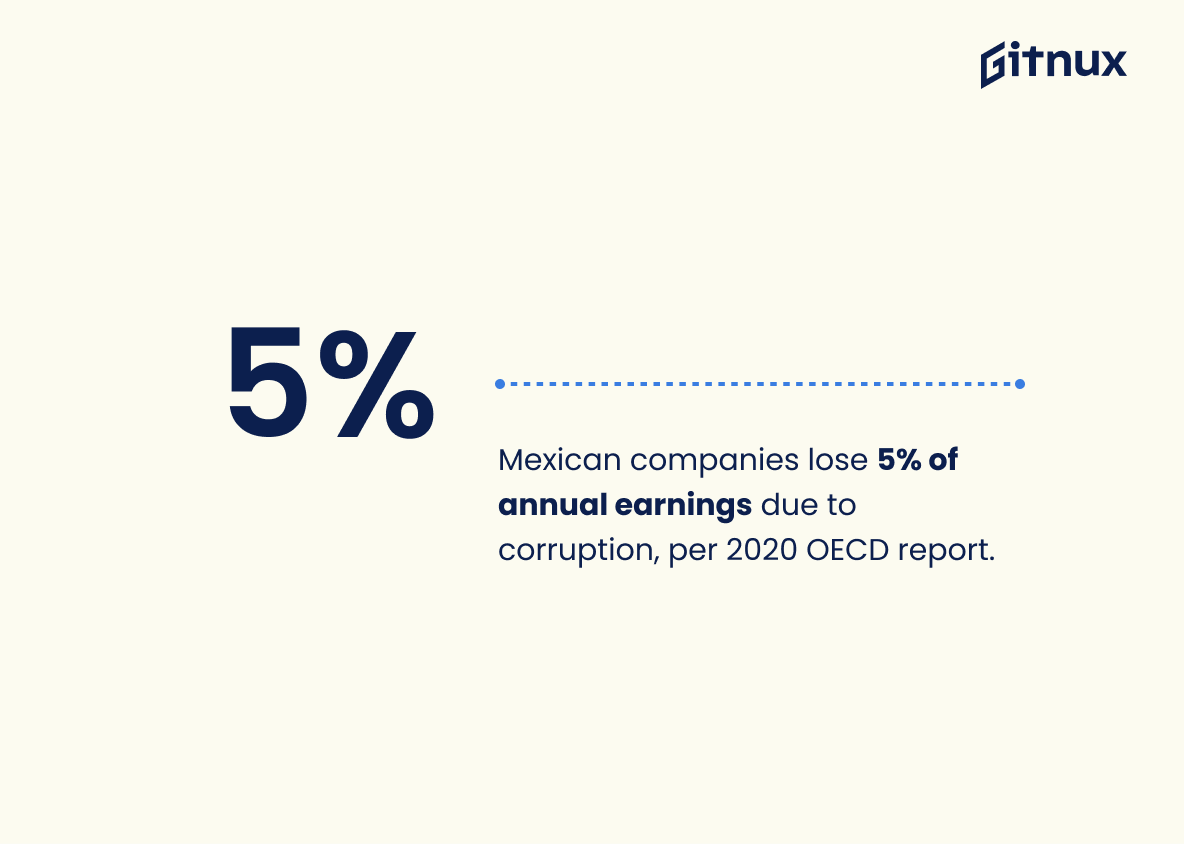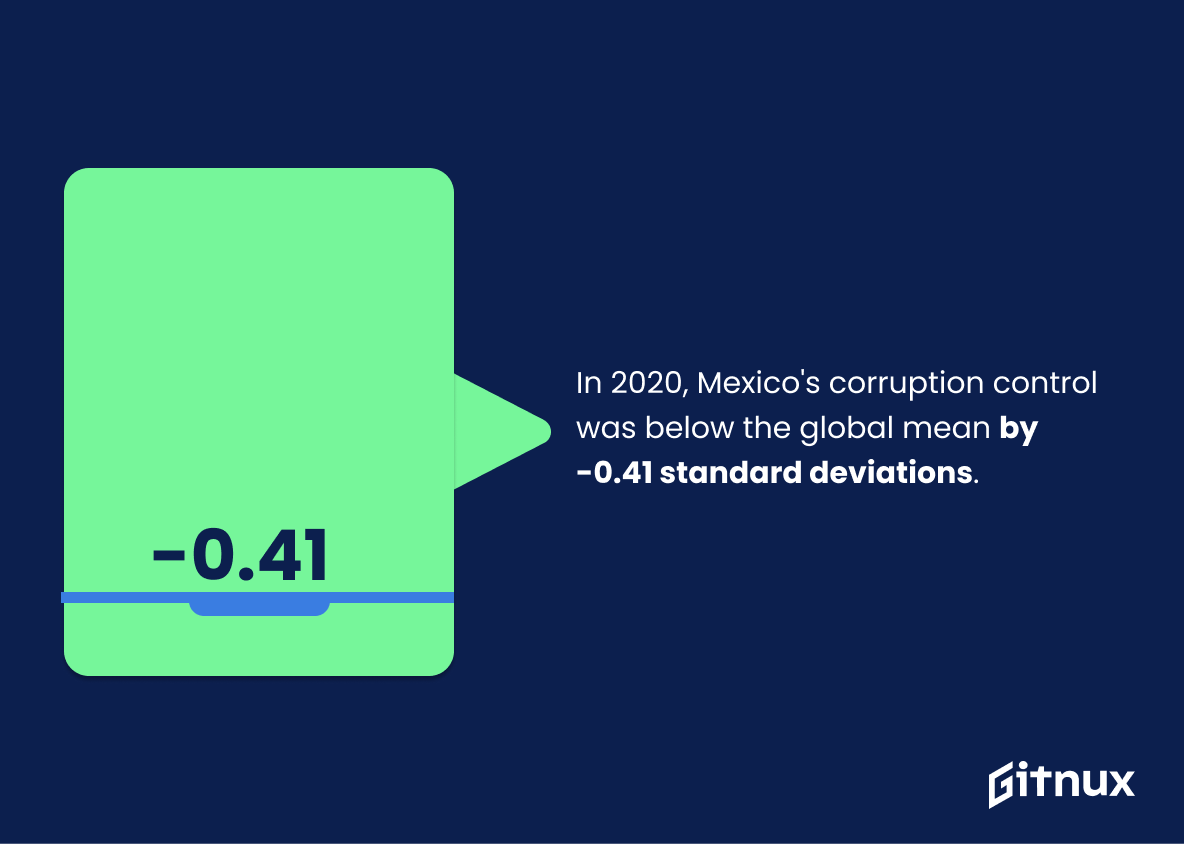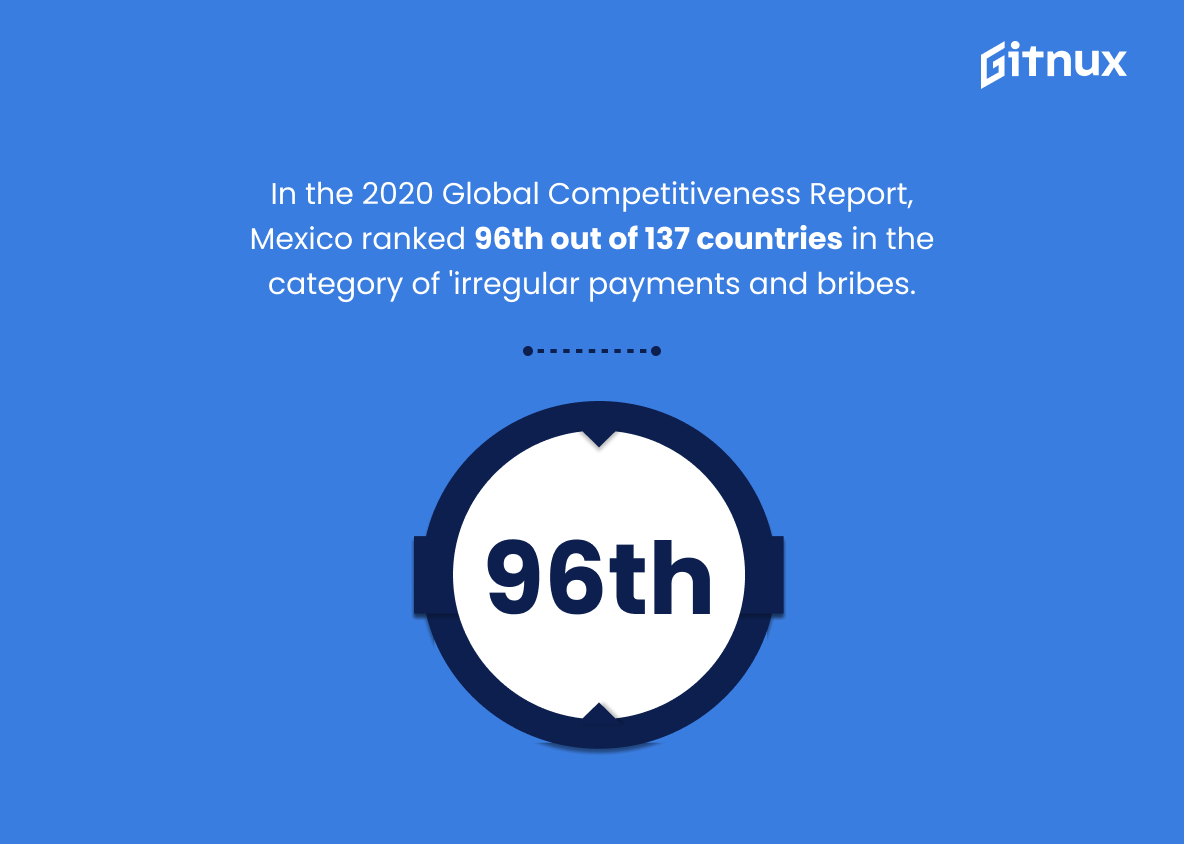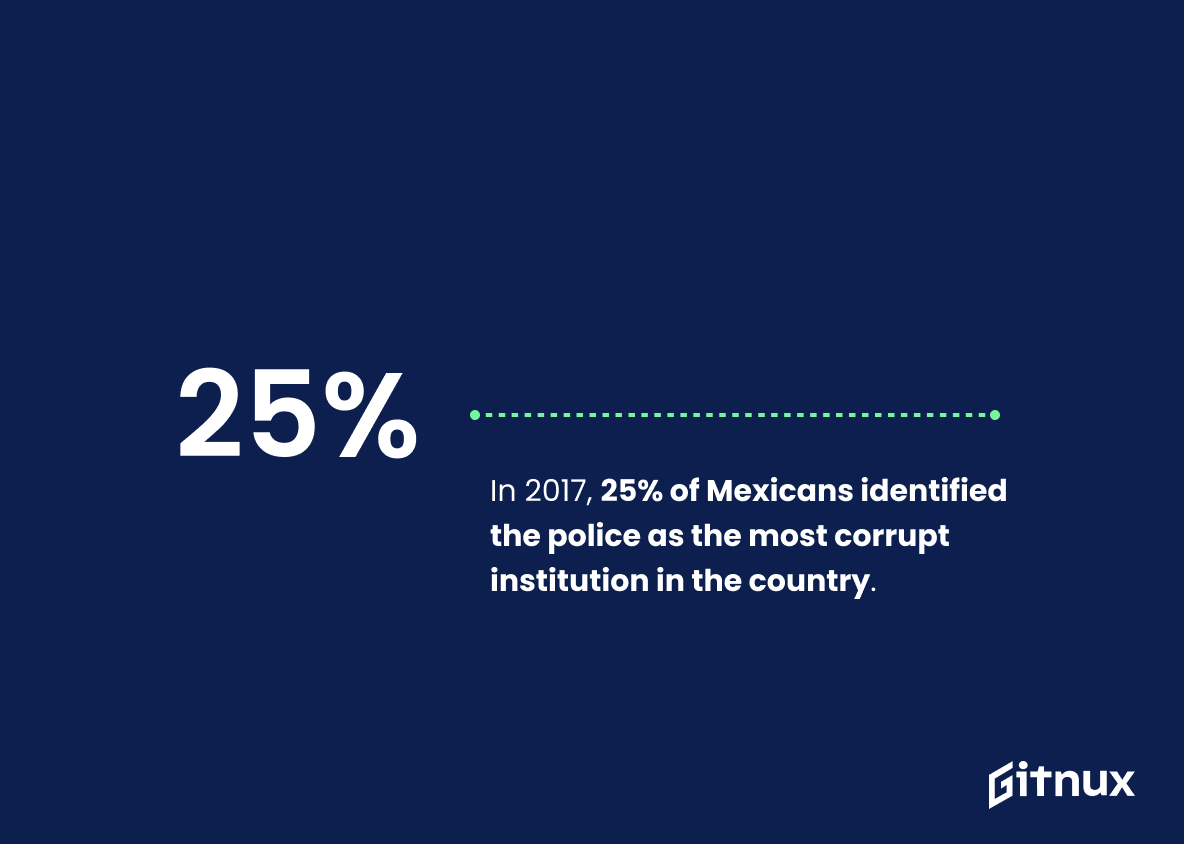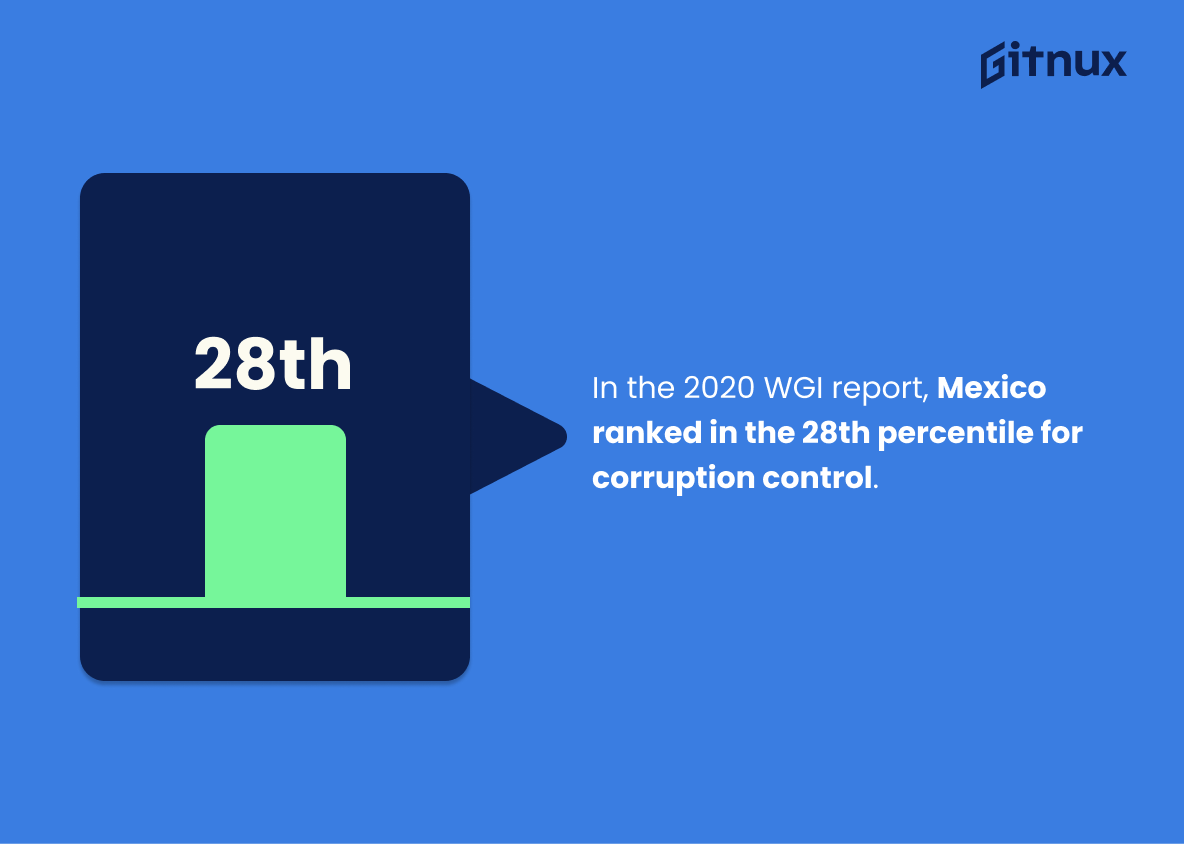Mexico is a country with an unfortunate history of corruption. According to Transparency International’s 2021 Corruption Perceptions Index, Mexico ranks 124 out of 180 countries in terms of perceived levels of public sector corruption. This ranking reflects the reality that many Mexicans face on a daily basis: 60% believe that corruption has worsened in the last 12 months and 43% report having paid a bribe to access public services within the same period (Global Corruption Barometer 2021).
The Mexican Civil Service Secretariat (SFP) reported only 2.7% of federal-level cases were properly investigated and sanctioned between 2014 and 2018, while 93% of companies surveyed by Promonegci reported encountering some form or another type of corrupt practices in their industry during 2020. Additionally, 40% consider government efforts against corruption as “very bad” according to Global Corruption Barometer 2021; 44%, very/extremely corrupt when it comes to judiciary matters (Transparency International); 66.9 % considered public officials “very corrupt” according to Imcyc survey; 5 percent loss due annual earnings attributed by OECD report; 87.6 % did not report any case related with bribery or other forms for 2019 Inegi Survey ; 25 percent believed police are most corrupted institution based on Latinobarometro 2017 study ; 28th percentile control over corruption from World Bank WGI Report 2020 , 3 percent conviction rate among 1 400 cases brought before SNA 2019 , 36 trust percentage towards government Edelman Trust barometer 2020 . All these statistics point at one conclusion: there is still much work left ahead if we want Mexico free from this scourge once and for all
Mexico Corruption Statistics Overview
43% of Mexicans report having paid a bribe to access a public service within the last year (Global Corruption Barometer 2021).
This statistic is a stark reminder of the prevalence of corruption in Mexico. It highlights the fact that bribery is a common practice in the country, and that accessing public services can be a difficult and expensive process. It also serves as a warning that corruption is a serious issue in Mexico, and that more needs to be done to address it.
According to the Mexican Civil Service Secretariat (SFP), only 2.7% of corruption cases at the federal level were properly investigated and sanctioned between 2014 to 2018.
This statistic is a stark reminder of the prevalence of corruption in Mexico and the lack of accountability for those responsible. It highlights the need for greater transparency and enforcement of anti-corruption laws in order to ensure that those who break the law are held accountable. It also serves as a warning to those who may be tempted to engage in corrupt activities, as the chances of being caught and punished are slim.
40% of Mexicans believe the government is “very bad” at fighting corruption (Global Corruption Barometer 2021).
This statistic is a stark reminder of the pervasive nature of corruption in Mexico. It highlights the fact that despite the government’s efforts to combat corruption, the majority of Mexicans still feel that the government is failing in its mission. This statistic serves as a call to action for the government to take more decisive steps to address the issue of corruption in Mexico.
44% of Mexicans believe that their judiciary is very/extremely corrupt, according to a 2015 survey by Transparency International.
This statistic is a stark reminder of the reality of corruption in Mexico. It highlights the fact that a large portion of the population has little faith in the judicial system, which can have a detrimental effect on the country’s overall stability and security. It also serves as a warning that more needs to be done to address the issue of corruption in Mexico, and that the government must take steps to restore public trust in the judiciary.
In 2017, Mexico was ranked the most corrupt country in the Americas by the Americas Quarterly, with a corruption score of 4.65 out of 10.
This statistic serves as a stark reminder of the prevalence of corruption in Mexico. It paints a picture of a country where corruption is rampant and pervasive, and highlights the need for greater transparency and accountability in the Mexican government. The Americas Quarterly’s corruption score of 4.65 out of 10 is a damning indictment of the state of corruption in Mexico, and serves as a call to action for those in power to take steps to combat it.
A 2019 survey by the Mexican National Institute of Statistics and Geography (INEGI) revealed that at least one in three companies in Mexico has been a victim of corruption.
This statistic is a stark reminder of the prevalence of corruption in Mexico. It highlights the fact that corruption is a pervasive issue in the country, one that affects businesses of all sizes. This statistic serves as a call to action for the Mexican government to take steps to address this problem and ensure that businesses can operate without fear of corruption.
In a 2019 Inegi survey, 87.6% of respondents reported they did not report corruption cases to the authorities.
This statistic paints a stark picture of the prevalence of corruption in Mexico; it suggests that the vast majority of people are not taking action to report cases of corruption to the authorities. This indicates that corruption is so widespread and accepted that people are not even attempting to challenge it. This is a worrying sign for the future of Mexico and its citizens, and should be addressed as soon as possible.
A 2020 OECD report found that Mexican companies lose 5% of their annual earnings due to corruption.
This statistic serves as a stark reminder of the devastating effects of corruption in Mexico. It highlights the immense financial burden that corruption places on businesses in the country, with 5% of their annual earnings being lost to corrupt practices. This statistic is a powerful indicator of the scale of the corruption problem in Mexico, and serves as a call to action for the government and citizens to take steps to combat it.
According to the World Bank, in 2020, Mexico’s control of corruption was below -0.41 standard deviations from the global mean, placing it in the lower half on this indicator.
This statistic is a telling indication of the state of corruption in Mexico. It shows that the country is lagging behind the global average, placing it in the lower half of the rankings. This is a stark reminder that Mexico still has a long way to go in terms of curbing corruption and improving its governance.
The 2020 Global Competitiveness Report ranked Mexico 96th out of 137 countries on the indicator “irregular payments and bribes.”
This statistic serves as a stark reminder of the prevalence of corruption in Mexico, highlighting the need for greater transparency and accountability in the country. It paints a picture of a nation where bribery and irregular payments are commonplace, and where citizens are unable to trust their government to act in their best interests. This is a worrying trend that needs to be addressed if Mexico is to make progress in its fight against corruption.
According to the Instituto Mexicano para la Competitividad, corruption costs Mexico between 2% and 10% of GDP per year.
This statistic is a stark reminder of the immense economic burden that corruption places on Mexico. It is a clear indication that corruption is not only a moral issue, but also a financial one, with the country losing billions of dollars each year due to corrupt practices. This statistic serves as a call to action for the Mexican government to take decisive steps to combat corruption and ensure that the country’s resources are used for the benefit of its citizens.
In 2018, 63% of surveyed companies in Mexico considered bribery and corruption to be part of everyday business.
This statistic is a stark reminder of the prevalence of bribery and corruption in Mexico. It paints a picture of a business environment where such practices are seen as the norm, rather than the exception. This is a worrying trend that needs to be addressed if Mexico is to make progress in tackling corruption.
A 2017 study found that 25% of Mexicans believe that the police are the most corrupt institution in the country.
This statistic is a telling indication of the level of distrust that Mexicans have in their police force. It speaks to the prevalence of corruption in the country and the need for reform in order to restore public confidence in the institution. It is an important piece of data to consider when discussing the state of corruption in Mexico.
The Worldwide Governance Indicators (WGI) report for 2020 states that Mexico ranks at the 28th percentile for the control of corruption.
The Worldwide Governance Indicators (WGI) report for 2020 paints a stark picture of Mexico’s control of corruption, ranking it at the 28th percentile. This dismal statistic serves as a reminder of the pervasive nature of corruption in Mexico, and the need for greater transparency and accountability in the country’s government and institutions.
According to the 2020 Edelman Trust Barometer, only 36% of Mexicans trust their government to do what is right.
This statistic serves as a stark reminder of the lack of faith Mexicans have in their government to do what is right. It paints a picture of a nation where trust in the government is low, and corruption is rampant. This statistic is a key indicator of the state of Mexico’s political landscape and provides a valuable insight into the prevalence of corruption in the country.
Conclusion
The statistics presented in this blog post paint a grim picture of the state of corruption in Mexico. The country ranks 124 out of 180 countries on Transparency International’s 2021 Corruption Perceptions Index, and 60% of Mexicans believe that corruption has worsened over the last 12 months. Additionally, 43% report having paid a bribe to access public services within the same period. Furthermore, only 2.7% of federal-level cases were properly investigated and sanctioned between 2014 to 2018 according to Mexican Civil Service Secretariat (SFP).
In addition, 93% of surveyed companies reported encountering corruption in their industry while 40%, 44%, and 66.9 % respectively believed that government is “very bad” at fighting it; judiciary is very/extremely corrupt; and public officials are “very corrupt” respectively as per Global Corruption Barometer 2021 survey by Transparency International , 2015 survey by TI & 2020 survey for automotive industry . Moreover OECD found 5 percent annual earnings loss due to bribery & IMCO estimated cost from 2%-10%. Inegi 2019 Survey revealed 33 percent victimization rate with 87 percent not reporting any case whereas Latinobarometro 2017 study showed 25percent believing police being most corrupted institution . Lastly WGI ranked 28th percentile for control on corruption & SNA brought 1400 cases but 3percent resulted into conviction as per FPFIPs 2019 evaluation report . All these facts point towards an alarming situation where trust level among citizens have dropped drastically with 36 percentage trusting government according to Edelman Trust Barometer 2020 Report which further aggravates already existing problem making it difficult for authorities take corrective measures against such malpractices without support from people itself..
References
0. – https://www.reports.weforum.org
1. – https://www.www.latinobarometro.org
2. – https://www.info.worldbank.org
3. – https://www.imco.org.mx
4. – https://www.hidalgoconsultores.com
5. – https://www.www.americasquarterly.org
6. – https://www.www.inegi.org.mx
7. – https://www.www.transparency.org
8. – https://www.www.ey.com
9. – https://www.www.oecd.org
10. – https://www.www.edelman.com
11. – https://www.databank.worldbank.org

